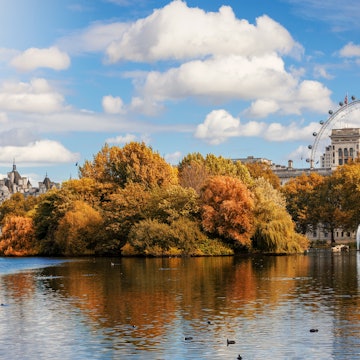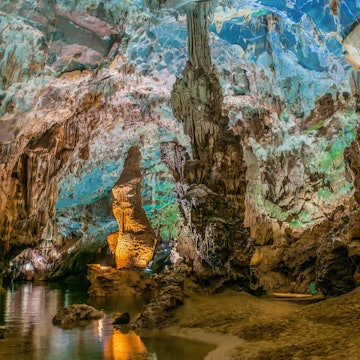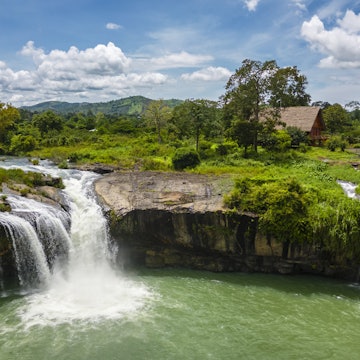
A guide to Laos, one of Southeast Asia's less-traveled nations

Sep 18, 2025 • 11 min read

The Mekong in Si Phan Don (4000 Islands), Laos. Justin Foulkes for Lonely Planet
Less famous than its neighbors, Thailand and Vietnam, Laos can sometimes sink into obscurity along the Southeast Asia backpacking trail. Don’t let it. The quiet and culturally rich Lao People’s Democratic Republic has lots to offer – much of which you won’t find anywhere else in the world.
While its history has been marked by war, revolution and other hardships, all this has unfolded in a stunning tropical paradise. Indeed, it’s this very contrast – between a tumultuous past and sheer natural beauty – that makes Laos a particularly rewarding destination to explore.
The ancient Lanna kingdom capital of Luang Prabang boasts some of the most untouched and historically significant temples in the region. The capital Vientiane brims with multicultural nuances. Incredible natural beauty is apparent in almost every province. All this makes Laos an ideal place for those who prefer getting off the tourist track. The country has generally drawn backpacking types, though it’s now becoming a more popular (and accessible) place for families and luxury travelers, too. Plan your travels in Laos with this first-time guide.
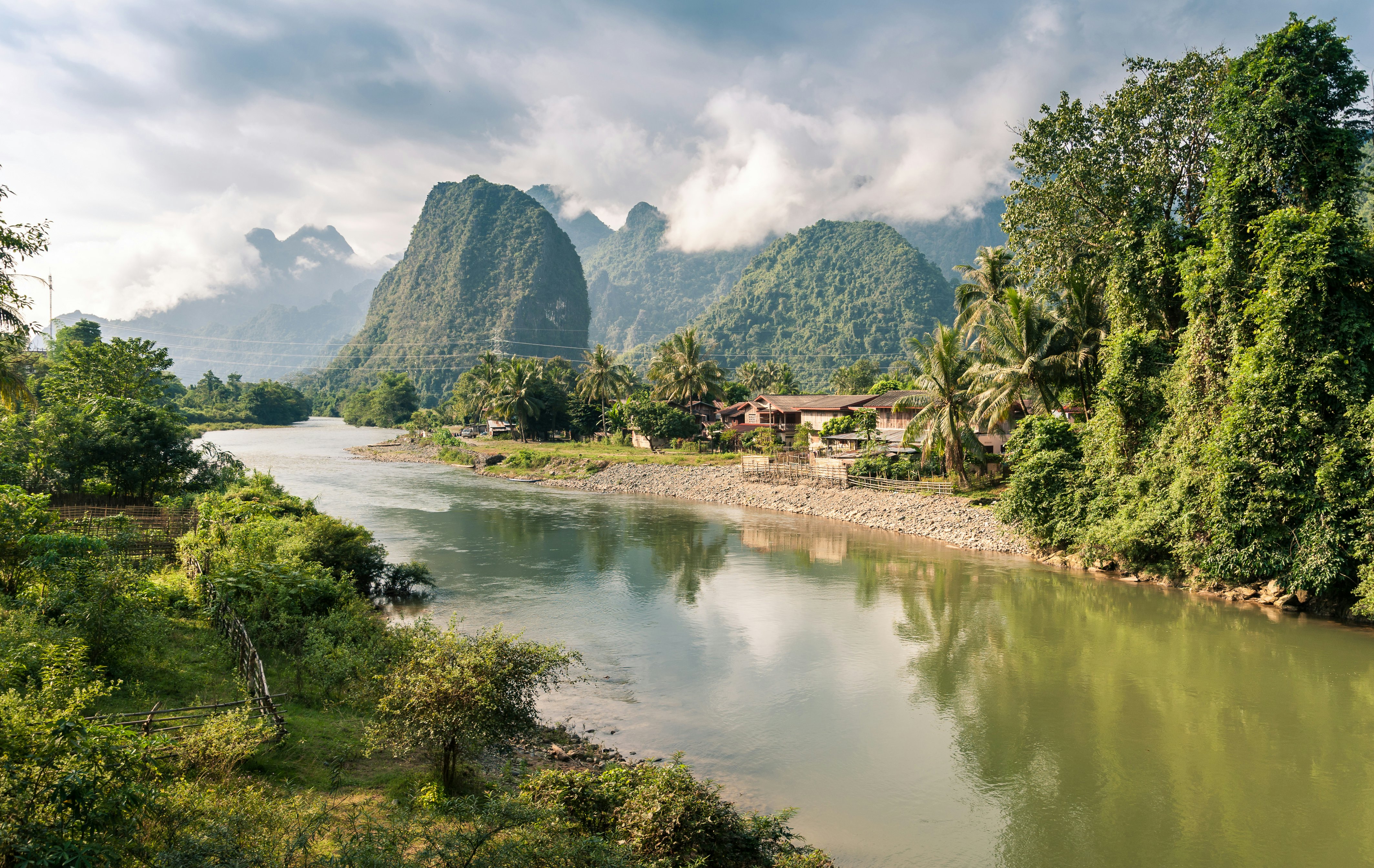
When should I go to Laos?
As in most other Southeast Asian countries, Laos promises a tropical climate throughout the year, with average daytime temperatures ranging between 25–35°C (77–95°F). During the “winter” months of November to February, Laos cools down a smidge; thanks to a lack of rain clouds, the nights can get comfortably chilly. Any local would say this is the best time to visit.
In winter, the humidity drops, the rivers are full, and the tropical forests are lush from the recent monsoon rains. The northernmost parts of the country (such as Luang Namtha, Luang Prabang and Udomxai) are also noticeably more temperate than other areas on the same latitude, thanks to their mountainous elevation.
October is a great month to visit Laos if you prefer to beat the winter crowds. Although you may catch the tail end of the monsoon, things should stay mostly dry – and there are several cultural festivals worth taking in, like the Boat Racing Festival and the Naga Rocket Festival.

March through June is the summer, when the heat can be unbearable for the uninitiated, especially on buses and in hostels. River levels are also low during this time (a situation made worse by Chinese and Thai dam projects along major waterways), while slash-and-burn farming blankets portions of the country in a hazardous haze of air pollution.
The summer’s saving grace, however, is the Lao New Year, when the country erupts into a nationwide water fight to wash away the sins of yesteryear and ring in the new. Known in Laos as Pi Mai, the festival is generally a calmer affair than in next-door Thailand, emphasizing cultural experiences over parties. If you happen to be with a family or friendly locals, you’ll no doubt be invited to a “merit-making” ceremony to call up good luck, health and fortune in the new year. For something a little more public, head to any city center for parades, festive markets and performances galore.
By July, the new rains quench the parched earth and clean the air, giving way to a palette of lush greens nationwide. While travel during the monsoon season can be exciting, many tourist attractions and national parks close during this time due to flooding and other rain-induced dangers. The only exception is the Bolaven Plateau, where an exceptional array of cascading waterfalls and forested waterways reach their full glory during this time.

How much time should I spend in Laos?
First-time visitors should consider two options: a short, in-and-out trip as part of a wider tour of Southeast Asia, or a longer loop of the country.
A short visit of a few days
Entering and exiting from Vientiane, with a few days’ jaunt around the wild mountains of Vang Vieng and Luang Prabang, gives a taste of the country’s treasures for those on a tight schedule.
Just an hour away from the capital on the high-speed train line, or 3 hours by bus, Vang Vieng is renowned for its limestone mountains and countless blue-green lagoons that offer a natural escape from the tropical heat. The town has moved on from its once louche reputation, with a ban on infamous “river bars” making it a draw for those who admire natural beauty and outdoor adventure.
A few hours north again and you’ll be in sleepy Luang Prabang, whose ancient cities, jungle aesthetics and laid-back pace offer plenty of allure. When you’re ready to speed up again, the high-speed train will have you back to Vientiane in under 2 hours.

A longer visit of at least a week
If you have a bit more time, we highly recommend making a loop of the country. Enter from Thailand, Vietnam or China, then use the intercity buses that connect Laos’ larger towns. For planning purposes, you can divide the country into four sectors: the north, where you’ll find Luang Prabang, Luang Namtha and further-afield spots like the megalithic Plain of Jars; the Vientiane region, home to both the busy capital and nearby, dreamy Vang Vieng; the central provinces, where you can enjoy the stunning scenery of the Tha Khaek Loop and old colonial cities like Savannakhet; and the south, with the stunning Bolaven Plateau and Si Phan Don (also called “the 4000 islands”), which make up the beginning of the Mekong River Delta.
Top things to do in Laos
Explore the monuments of Vientiane
Most first-time visitors enter through Vientiane – and it’s a great place to start. Expect an eclectic mix of French and Asian architecture, as well as grand monuments. The temple of Wat Si Muang draws in locals from across the Southeast Asian subcontinent in search of good luck and blessings.

Admire Laos' natural beauty
Not far from Vientiane, beautiful Vang Vieng is a classic stop-off point for those with some time on the way to Luang Prabang – though many will tell you that Luang Prabang and Luang Namtha both offer better views, more lagoons and cheaper prices.
If you enter from the south via Thailand or across the Vietnamese or Cambodian borders, your best bet is to settle down in Pakse to explore the surrounding natural wonders. The Bolaven Plateau has an intriguing history: it’s been both a center of coffee production and a target for blanket bombing during the Vietnam War. Today, it’s perhaps best known for its towering waterfalls. Further south is Si Phan Don, where the Mekong River creates an inland archipelago of river islands with powerful and beautiful waterways.
Learn the rich history of Champasak
For something more cultural, the small town of Champasak is a laid-back stop-off as stunning as it is rich in history. The main attraction here is the sacred Wat Phu, an Angkorian ruin that dates back to the 11th century, hidden in the jungle like something from an adventure novel.
Cycle and sail in Khammouane
Looking east, the limestone karsts of Khammouane province tower over the landscape (and are best admired on a bike around the Tha Khaek Loop). Belowground, one of the world’s longest navigable river cave systems stretches 7.5km (4.5 miles) from mouth to exit, and is best explored by boat.

My favorite thing to do in Laos
There’s nothing better than getting on a motorcycle and exploring on my own terms. Communication can be tough in the middle of nowhere when you need to fill up your gas tank, but the natural beauty and unscripted opportunities you’ll find in the countryside – say, lunch with an elderly local, or an impromptu tour of a hidden cave – more than make up for the lack of tourist conveniences.
Rent a motorbike from the border town of Tha Khaek and head east along Rte 12 toward Vietnam. Within minutes, you’ll be greeted by towering limestone karsts that just keep getting more impressive the further you drive. (Just be sure to keep your eyes on the road!)
Following the loop with a left turn onto route E1 brings you to the mountainous hangout of Thalang, perfect for spending the night before you follow the same road up and around toward Lak Sao. By this point, your derriere may be a little sore – but don’t give up now. The detour to Kong Lor Cave is well worth the extra hours in the saddle, with Hitchcock–style visuals as you drive between two towering cliff faces and the villages below. In Laos, the journey itself often brings the wonder.
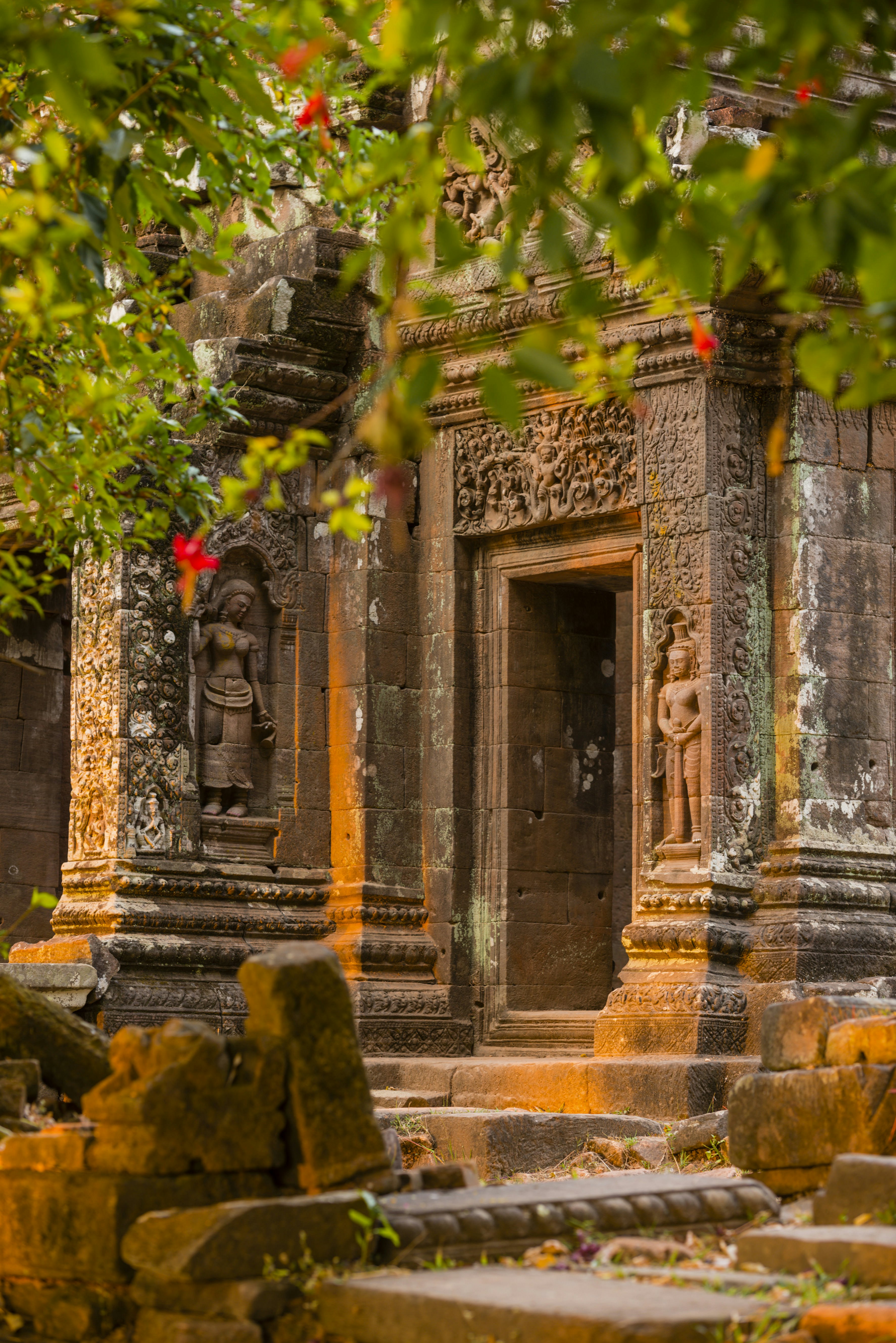
How much money do I need for Laos?
In Laos, having cash on you is very important. You shouldn’t expect credit-card readers even in larger shops, gas stations and convenience stores, and ATMs are far and few between.
Since the Lao kip is quite unstable and highly inflated, vendors tend to accept both the Thai baht and US dollar (though change will be rendered in kip). Still, a movement to reject this practice and thus stabilize the national currency means that a growing number of vendors will only be paid in kip. Most banks will change foreign currency into kip for the official daily rate, and ATMs provide on-screen conversions before spitting out just the right combination of kip notes. Here's a guide to local prices:
Air-conditioned hotel room: 300,000 to 1,000,000K
Hostel room with fan: 100,000K
City tuk-tuk ride: 50,000 to 200,000K
Bus ticket between cities: 300,000K
Liter of gas: 34,000K
Admission fees to tourist attractions: 20,000 to 50,000K
Bowl of noodles: 30,000K
Bottle of water: 5000K
Bottle of Beerlao: 10,000K
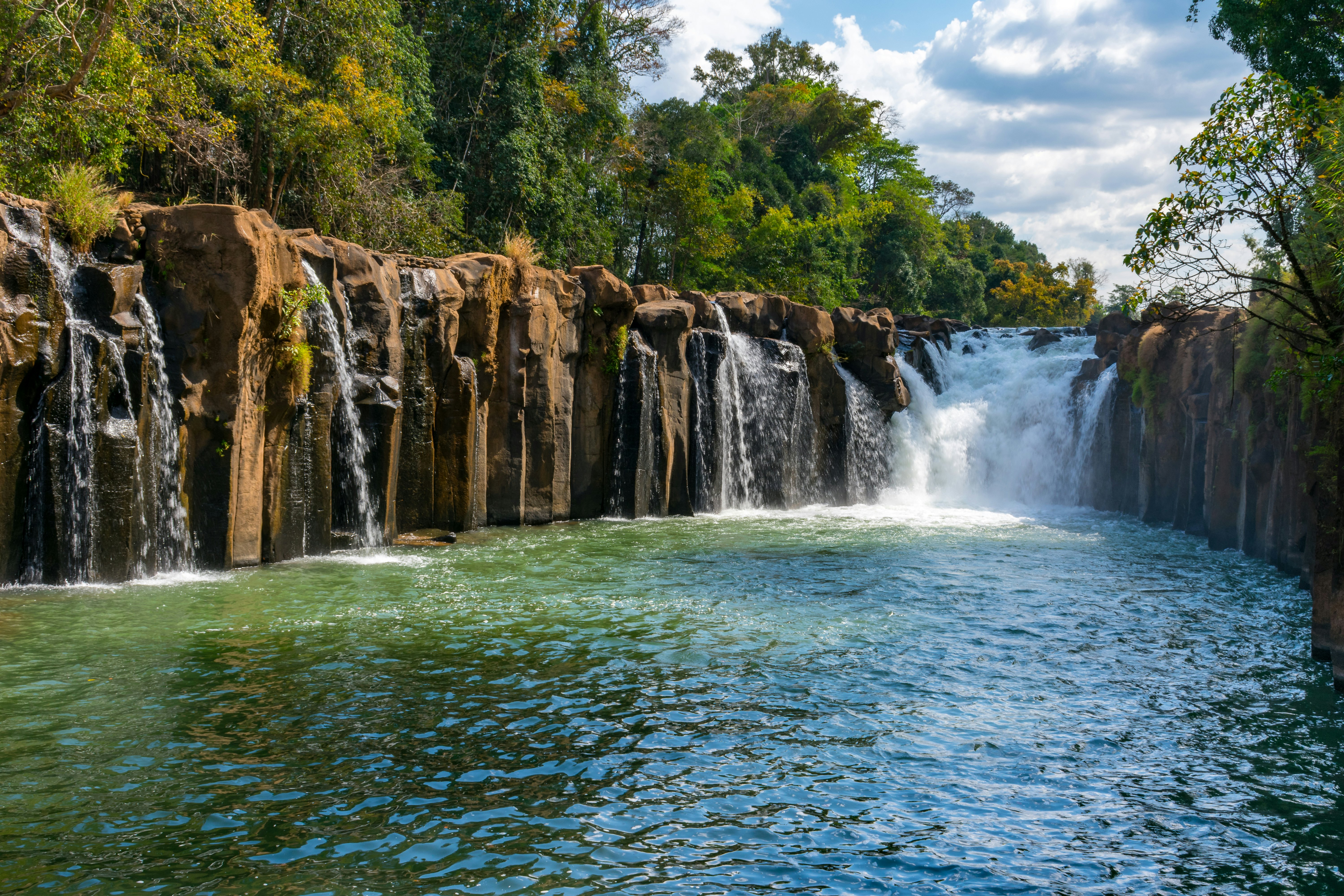
Do I need a visa for Laos?
ASEAN citizens, and some other nationalities, do not need a visa to visit Laos and are free to enter for between 15 to 30 days.
Citizens of most other countries require a visa for entry. The government of Laos has an e-visa web portal, but it’s often broken or inactive, so we recommend obtaining a visa on arrival at most border posts and at any international airport. Expect to pay US$30-45 (depending on nationality), in dollars, baht or kip. When you arrive in Laos, avoid third-party agents and touts and make your way to the immigration booth. You’ll need to fill out a few forms and provide a passport photo – you can pay an extra fee if you don’t have one with you – which gets you a full-page visa sticker in your passport granting you 30 days of travel within the country.
What are accommodations like in Laos?
Generally, accommodation is cheap and of a lower standard compared to Vietnam or Thailand, though quality tends to increase in tandem with price. Most rooms in cities and at resorts will have a private bathroom with some form of hot water. In rural locations, homestays or farmstays, you should expect the bare minimum. (It’s part of the experience, after all!)
Is it easy to book activities and hotels in Laos in advance?
Hotels are best booked through reputable third-party sites like Agoda or Booking.com, whereas activities are harder to sort out in advance. This is both due to a lack of digital fluency in the country and a more local approach to tourism in general.
We recommend doing a bit of advance planning through hotels and travel agents as best as you can, then sorting out the remaining details once you arrive in the country.

What’s the food like in Laos?
Lao cuisine isn’t unlike that of northeastern Thailand (Isan food), with dishes that tend to be less spicy and more savory. Imagine a marriage of flavors between Thai, Vietnamese and Chinese cuisines.
Staples of Lao cuisine include sticky rice, minced-meat salads, fermented fish paste and pho noodles. Given the cost of protein, dishes often contain less beef, goat and pork and more rice and vegetables. This also means vegetarian options are easier to come by, providing you’re not fazed by a splash of fish sauce here and there.
Is Laos suitable for kids?
Bringing your kids along to Laos depends, of course, on how you like to travel. If you’re carrying a lot of baggage and worry about diet, dirt and bugs, it may be challenging. But if you’re happy to see your kids running around with chickens, playing in the mud or just enjoying life as the locals do, then you’ll be fine.
Laos is a very welcoming country, and its people love children. Even in small villages, you’re likely to see playgrounds, bouncy castles and even fair rides set up year-round to keep children entertained.

How safe is Laos?
Generally, quite safe. In the cities and rural areas, people are typically kind, helpful and trustworthy. Still, as anywhere, it’s important to stay aware and vigilant. Avoid flaunting your wealth, as pickpocketing can occur, especially at markets. Know that locals are usually quick to call out any suspicious activity, so you’re almost always around helpful people who have your back.
Keep in mind that few countries maintain embassies in Laos. This can make renewing a lost passport or finding your way back to a neighboring country a bit more complicated and time-consuming.
Can I use my phone, or should I buy a SIM card in Laos?
Roaming works well in Laos and is relatively cheap for most carriers. If you prefer to use a Lao SIM card, they are cheap and can be easily acquired from booths at any port of entry, or at most convenience stores. Most Lao tour guides, taxi drivers and people in general use WhatsApp or WeChat to communicate.
Do I need insurance for Laos?
Yes. Since Laos’ health infrastructure is poor and medical treatment might involve a transfer to Vientiane or even Thailand, costs can quickly skyrocket for serious illnesses or emergencies. Don’t travel here without the right insurance.
What’s Lao coffee like?
Coffee in Laos is great. Always go for the freshly roasted beans.








